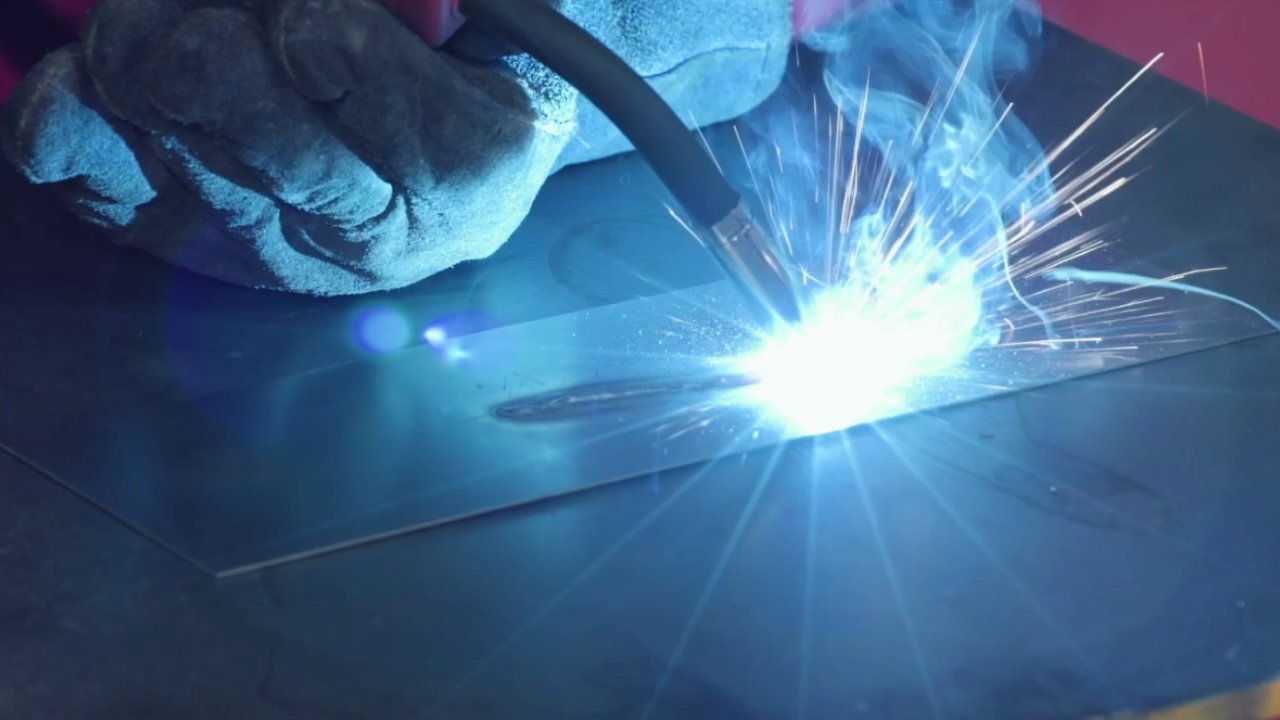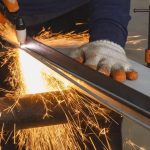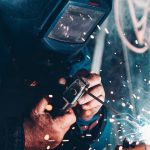The welding method may make many things, including furniture, automobiles, and boats. The metal is first chopped into tiny strips, which are then joined by welding. For many occupations, the ability to weld is crucial. It may be used in various fields, including building, vehicle, and appliance repair. You can learn to weld safely and effectively with the appropriate instruction. A lengthy metal strip is heated before being stretched across the target region in this welding.
Welding is the process of superheating and connecting pieces of metal together. While it’s a necessary skill for anyone in metalworking, it can also be an incredibly fun and creative hobby.
021208.com
What is welding?
Welding is melting metal between two or more pieces of metal, followed by using a filler material to create the junction. The filler material is often melted with connected metal pieces such as a rod or wire. Welding is used to constructing vehicles, bridges, buildings, and other metal constructions. Additionally, it is used to construct ships, oil rigs, and other substantial metal structures to connect pipes and other metal components.
How it works
It operates on the fundamental idea that you build a profile with your basic information and the qualities you want in a companion. After that, you are presented with several prospective matches, which you may like or reject. If you two click, you may start a conversation to determine if you are compatible.
Technique of weld
Two pieces of metal are welded together using the learn welding procedure by heating them to a high temperature and then pushing them together. Arc welding is the most popular because it employs an electric arc to provide the heat required to melt the metal.
Types of welds
There are several varieties of welds, each having benefits and drawbacks. MIG, TIG, and arc welding are the three most popular kinds of welding. The most common form of welding is MIG since it can be used to weld various metals and is reasonably simple to master. MIG welding, however, may be difficult to regulate and generate a lot of welding fumes.
A more sophisticated kind of welding, tig welding, results in cleaner welds. However, it is more difficult to master and needs more costly equipment than MIG welding. The most popular kind of welding utilized in the industry is arc welder. It may be used to weld several metals and is extremely adaptable. Arc welding, however, may be hazardous due to the quantity of sparks it generates.
Why should you learn to weld?
Welding is a critical skill in many industries, from construction to manufacturing. By learning to weld, you can open up a world of career opportunities. Welding is also great for creating useful and decorative objects for your home or office. Welding is your hobby or profession if you’re the type of person who likes to work with your hands and create things.
What are the things you will need?
There are a few things you will need to get started on your journey to becoming a master chef:
- You will need a passion for welding and a willingness to learn.
- You will need access to quality materials and machines.
- You will need the willingness to experiment and have fun in the workshop!
With these things in mind, you are well on becoming a good welder.
Welding is a great hobby if you enjoy DIY projects! It’s also a great way to save money on home and auto repairs that you’d normally have to pay a professional to do.
021208.com
What are the benefits of welding?
Welding is the process of connecting two metal parts under pressure and heat. The capacity to deal with a range of metals, the ability to form complicated shapes, and the ability to produce strong, permanent joins are all advantages of welding. The industrial, automotive, and construction sectors all depend on welding.
Factors to consider to succeed at welding
To excel in welding, one must take into account several factors:
- It would be beneficial if you had a solid grasp of welding fundamentals and the various methods used.
- You must have access to the necessary tools and supplies.
- You must be able to work in a healthy and secure setting.
- You must have the capacity to work fast and effectively.
Tips for choosing the welding equipment
The correct welding equipment must be chosen since there is a wide variety on the market. Here are some pointers to assist you in making the best decision:
- Select the welding technique you’ll use. You must ensure that the equipment you choose is appropriate for the welding you will be undertaking since there are several types of welding.
- Take the equipment’s size and power into account. The size and scope of the tasks you’ll be working on will determine the size and power of the welding equipment.
- Think about the features you need. Different welding equipment has different features, so you need to consider which features you need to do the job correctly.
- Compare prices. Welding equipment can vary widely, so it is important to compare prices to get the best value for your money.
- Read reviews. Once you have narrowed down your choices, it is a good idea to read reviews of the equipment to get an idea of its performance and quality.
How to weld
If you’re interested in learning how to weld, there are a few things you need to know:
- You’ll need to have access to the right equipment. It includes a welder, welding torch, and welding supplies.
- You’ll need to have a basic understanding of the welding process. It includes knowing how to set up the equipment and control the welding torch.
- You’ll need to practice welding on a variety of materials. It will help you get a feel for the process and experiment with different techniques.
- Don’t be afraid to ask for help from a qualified instructor.
They can provide valuable feedback and help you troubleshoot any problems you may encounter.
How to Start Welding for the First Time
For beginners, welding might seem like a difficult operation, but with little practice and the correct equipment, it can also be enjoyable. Here are some pointers for beginners on how to start welding:
- Choose the right welding process. There are many different welding processes available, each with advantages and disadvantages. MIG, TIG, and Stick welding are some of the most widely used welding techniques. To decide which welding procedure is best for your job, consult a welding expert or do some internet study.
- Compile the required materials. You’ll need welding wire, a welding rod, and a welding helmet in addition to a welding machine. You may also need additional equipment, such as a welding table and clamps.
- Prepare your work area. Ensure your welding location is well-ventilated and all your materials are close at hand.
- Don your protective gear. Wearing the appropriate safety equipment, such as welding helmets, welding gloves, and long sleeves, is crucial since welding may be harmful.
- Test your skills on some used metal. It’s a good idea to practice welding on some scrap metal first before beginning your project. You can adapt your technique and develop a feel for the welding supply process.
You’ll be welding like a pro in no time with some practice!
Welding tips and tricks
High heat is used during the welding process to melt metals and form a connection between two parts. A few hints and ideas might make the procedure a little bit simpler. It’s a talent that requires time and effort to perfect.
Using the proper metal type for the work while welding is one of the most crucial things to keep in mind. Because different metals have various melting points, it’s crucial to choose the right one for the job at hand. Before welding, clean the metal to eliminate any corrosion, dirt, or debris that might damage the connection.
Using the proper welding rod is another crucial piece of advice. The base metal you are using should be the same as the welding rod, which should be somewhat thinner than the metal you are welding. It will aid in ensuring a solid, long-lasting relationship.
Last but not least, practice makes perfect. You’ll become better at miller welder as you do it more often. So don’t be hesitant to start welding outside!
The Results of Welding: What can you expect?
High heat is used during welding to melt and fuse two metal parts. The welding outcomes may be affected by the metal used, the thickness, the welding procedure, and the welder’s degree of expertise. However, you can count on the weld to be robust and long-lasting. With the right maintenance and care, a welded joint may survive many years.
How to learn to weld and achieve the desired results
To learn how to weld and get the required results, you must do the following steps:
- Finding a competent tutor who can impart sound skills would be beneficial.
- It would help if you practiced welding on your own or with a MIG welder with expertise to get some practical experience.
- Read up on welding and find out all you can about the procedure.
- The appropriate tools, such as a welding machine, protective clothing, and metal to practice on, would be helpful.
- Till you master it, you must be patient and keep practicing.
Why is welding the best career out there?
The finest job out there is welding for a variety of reasons. To begin with, it is a highly skilled craft that takes years of practice to perfect. Welders may make fantastic pay since they are in high demand all around the globe. Tig welder work on various tasks, making it an interesting and hard profession.
Being a welder is a rewarding job, which is another excellent incentive to pursue. Welders often take a lot of satisfaction in their profession and like contributing to the construction and restoration of items that are significant to others. Stick welders must constantly be mindful of the hazards associated with welding since it is a highly risky process. On the other hand, Welders are often very safety-conscious and take all appropriate safety measures to safeguard themselves and others.
So if you’re seeking a demanding, interesting, and fulfilling profession, welding is a great option.
Conclusion
Welding is putting two materials together to create a usable thing. It may be used for various tasks, including building and vehicle repair. In conclusion, welding is a skill that must be practiced. It won’t be simple to learn at first, but with experience, it will become easier to use and more effective. Practicing with close friends and family is the greatest approach to learning how to weld. Once you master the fundamentals, welding can be a rewarding and enjoyable activity.







![12 Different Types of Welding Processes [The Definitive Guide] 11 12 Different Types of Welding Processes [The Definitive Guide]](https://www.021208.com/wp-content/uploads/2025/01/12-Different-Types-of-Welding-Processes-The-Definitive-Guide-150x150.jpg)



